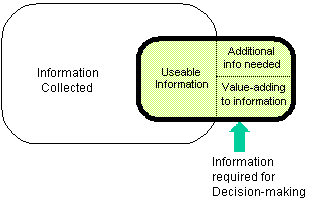
| Hari Srinivas | |
| Policy Analysis Series E-002. March 2015 |
| The clue to good informed decisions lies in the term itself - "informed" decisions. How do we ensure that the right information, is delivered to the right decision-maker at the right level of action (and at the right time), so that the necessary decisions are taken. What indeed are these decisions?
This short document looks at how problems can be defined, finding the information, processing the information to solve the problem, and tkaing the decision itself. 1. Defining the problem
Take time to properly define the problem. What is the issue to be covered? What is the problem? What decisions need to be taken? A fish-bone diagram will sometimes help in understanding the complex interlinkages that create a particular 'problem'. For each of the causes or its effects, make a list of information or data that will be required, and clarify how that information will lead to a better decision. Remember that sometimes, the real cause can lie hidden behind the 'visible' causes. |
|||||||
2. Finding the information
Determine the sources from where information needed for decision-making can be obtained. What information needs to be taken? Who has that information? Why is that information being collected by the source? Which component of the problem at hand will it help? Evaluate the sources to see which of them can provide the best information, and identify the mode and format in which the information is presented. Keep in mind that different sources provide information in different formats (for different reasons!).
Remember that information can also lie in experiences and insights that are not 'recorded.' Also look at the information pyramid to see if all levels are covered ... |
|||||||
3. Processing the Knowledge
This where the information gathered is matched with the problem in hand. The relevant information from each source is extracted and information from multiple sources is organized. Which parts of the information collected needs to be used? What additional data or information is needed? How can information be best presented to be able to understand the situation and take decisions? The collected information is evaluated and integrated for its relevance, validity and interconnectedness.  Remember that it is critical to package the information to fit the audience using the right medium: presenting the right information at the right time to the right audience. |
|||||||
4. Taking the decision
In an interactive and inclusive process involving all the concerned parties, form an opinion from the information collected for its effectiveness and efficiency. Use it to take the decision. Has the decision taken help in solving the problem at hand? Was the decision satisfactory and took into account all the views of concerned parties? A decision taken may need to be examined closely and refined, and modified to meet differing needs over time.  Remember that implementing the decision (actors and actions), as well as monitoring and evaluating the actions taken, are integral parts of the decision! |
|
on |
| Environmental Decision-Making Contact:
|


